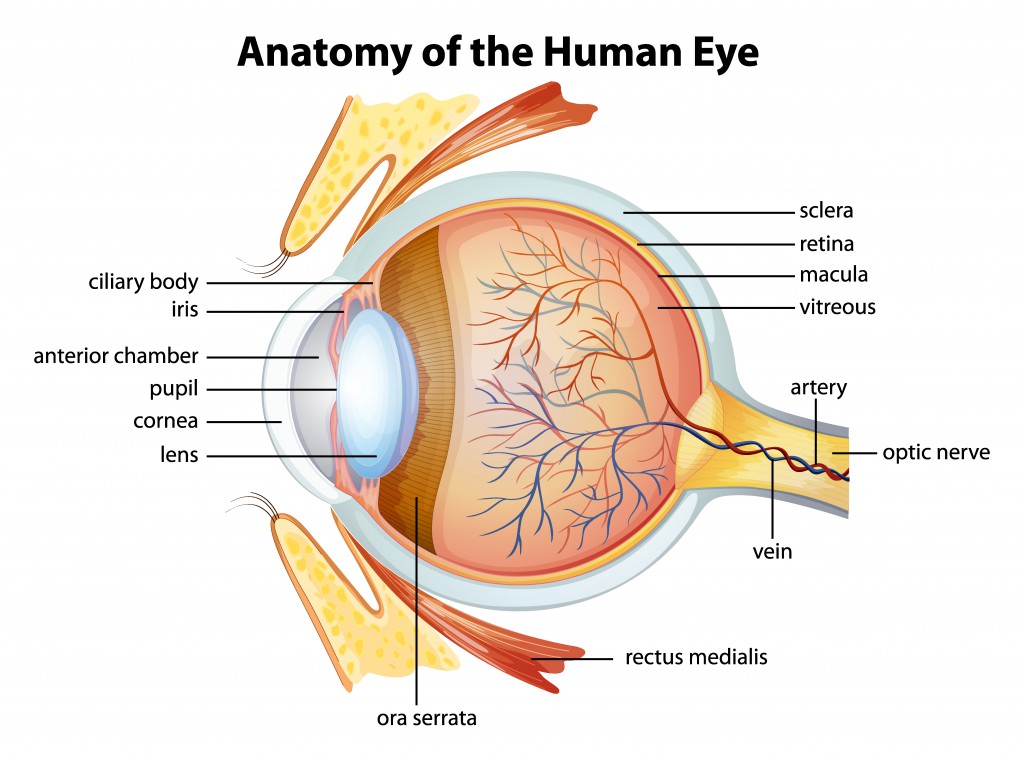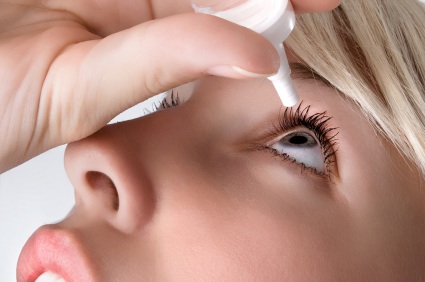How Long For Eye Infection To Clear
An eye infection is a general term applied to many different conditions. Eye infections can be caused by bacteria, viruses, allergies, or other microbiological means. Some common types of eye infections are pink eye, or conjunctivitis, blepharitis, and trachoma. These varieties of infections can spread easily and lead to larger problems including blurred vision, damage to the retina, cornea, or optic nerve, or even blindness.

Causes
Individuals who wear contact lenses are likely to contract an eye infection due to the buildup of bacteria. If the lenses are not properly cleaned and disinfected, bacteria are able to build up quickly. Other causes for mild eye infections include viruses, bacteria, fungus, allergies, and other irritants. Common causes of more serious infections include ocular histoplasmosis, sexually transmitted infections, shingles, and inflammation of the cornea.
Ocular Histoplasmosis
Ocular histoplasmosis is a fungal infection of the lungs that can travel to the eyes. This is commonly contracted in the United States; approximately 90 % of individuals living in the southeastern United States have developed this specific type of infection.
Sexually Transmitted Diseases
Sexually transmitted infections (STIs) such as Chlamydia, gonorrhea, or herpes can cause infections and visual damage. The infection can get into the eye through genital fluids or if the eyes are rubbed after handling infected genital areas.
Types of Eye Infections? Get Remedies Fast!
Shingles
Shingles are a chronic, reoccurring infection that causes chickenpox. After touching an open sore then touching the eye, the infection can move into the eye. Over 50 % of people who have singles will have an eye infection as a result of the infection.
Other Causes
Other causes of eye infections are:
- Lyme disease
- Crab lice
- Contact dermatitis
- Allergies
- Sarcoidosis
- Tuberculosis
- Acanthamoea.
Symptoms
Unfortunately, there is no specific list of symptoms for eye infections. The symptoms vary based on the cause of the infection, which part of the eye is infected, the severity, and the reaction in the individual. Common symptoms of conjunctivitis, commonly known as pink eye, are redness, crusting of the eyelid, itching, and discharge. For viral cases of conjunctivitis, the discharge is watery or mucous-like and with bacterial conjunctivitis, the discharge is thicker and can be green, yellow, or white in color.
Common symptoms of bacterial infections, or keratitis, include:
- pain
- itching
- redness
- a yellow discharge
- swollen eyelids
- constant, involuntary blinking
General symptoms of eye infections may include excessive tearing, redness, swelling, pain, itching, a feeling of sand in the eye, a discharge, or crusting around the eye.
Often, one can have a mild eye infection that may cause no pain or redness. These are difficult to diagnose and can damage the retina, blood vessels, or optic nerve within the eye if gone untreated.
Prevention
The most important step you can take in preventing eye infections is to always wash your hands. This will kill any harmful bacteria or viruses you come into contact with on a daily basis. If you know someone has an eye infection, do not share bedding, towels, or pillows as these items may have become contaminated with the infection.
It is best to never share cosmetics such as eyeliner, mascara, or eye shadows as they can be exposed to infectious materials easily. Once the eye infection is diagnosed, dispose of any contacts that may have been exposed to the infection in addition to any eye makeup. Do not wear contacts or eye makeup until the infection has cleared from the eye completely. Additionally, avoid swimming in chlorine when you have an eye infection. The chlorine can further irritate the eye and render medications ineffective.
Diagnosis
Diagnosis for eye infections can vary based on the cause of the infection. Often for bacterial infections, a swab of will be taken to identify the bacteria and the best treatment options. Viral cultures may be collected and tested, especially if the infection is seen in clusters throughout the eye. A doctor may do a conjunctival scrape in order to detect fungal infections or infections based on common STIs such as Chlamydia.
Treatment
Treatment for eye infections vary based on the type and severity of the infection. Typically, eye doctors will not prescribe medications for viral eye infections unless it has progressed into a worrisome state. Viral infections do not respond to antibiotics, which are the most commonly prescribed treatment for eye infections. For bacterial infections and some fungal infections of the eye, a physician may prescribe antibiotic eye ointments or drops.
Bacterial infections such as blepharitis, an inflammation surrounding the eyelid, require a topical antibiotic and a low-dosage topical corticosteroid. Styes, or small, painful lumps that occur on the upper and lower eyelid may require surgical procedures. Styes are caused by blockages of one of more of the oil-producing glands in the eyelid. An eye doctor may need to make an incision and drain the stye if treatments such as antibiotics and steroid drug injections prove to be ineffective.
Over-the-counter treatments are also available and are quite effective in treating infections caused by allergies. Antihistamines and artificial tears eye drops help to reduce debris in the eye and soothe any irritation. These over-the-counter are found at most supermarkets, drug stores, and pharmacies.
Side Effects
The side effects for medications such as steroids and antibiotic ointment and drops include redness, irritation, burning, stinging, nausea, fatigue, and mild itching. Over-the-counter treatments typically have fewer side effects, which include burning, stinging, redness, and irritation.
Home Remedies
Home remedies can be an easy, inexpensive, and effective solution to reducing the symptoms and curing uncomfortable eye infections. These remedies work best for infections caused by debris or allergies, but can also work with viral and bacterial infections.
Boric Acid
Boric acid, a weak and water-soluble acid, is easily found in supermarkets or drug stores. Occurring naturally in many fruits, vegetables, and other plants, boric acid serves as an antifungal, antiseptic, and eyewash. While boric acid is an acid, it is extremely mild and little side effects have been reported. A slight stinging or burning may occur with use.
Do not use Boric acid ophthalmic if you are allergic to boric acid. Also avoid indigestion or use near open wounds.
Flaxseed
Flaxseed is rich in omega-3 fatty acids, which are known to reduce the body of free radicals and stimulate the immune system help to fight infection. Boil a half-cup of water and add an ounce of bruised flaxseed. Allow the mixture to steep for at least 15 to 20 minutes. Strain the excess water and place the warm flaxseed onto a clean washcloth, cotton square, or piece of cheesecloth and apply directly to the eye. You can repeat this process up to 3 times a day until symptoms are gone.
The flaxseed works to reduce inflammation and soothe the pain in the eye. Do not use this remedy if you are pregnant. There have not been enough studies to show the effects of flaxseed on the fetus.
Tea
Tea bags can work to soothe the eye and reduce redness and swelling. Typically, black tea is used but other types of tea such as green or white may be used. Start by boiling the tea bags in hot water. Allow the bags to cool and place one bag the affected eye for 10 to 15 minutes. You can use the tea made by the bags and water as an eyewash and wash your eye out in the lukewarm mixture before applying the teabag compress.
Repeat up to 3 times a day until bothersome symptoms of the infection are gone. Some people have reported a slight burning or stinging associated with using tea as an eyewash. If this occurs, stop immediately stop using the tea to clean the eye.
Chamomile
Chamomile is known for its soothing and calmative properties. Boil 2 chamomile teabags with 3 cups of water. Allow to cool and apply the chamomile tea to the eye – with freshly washed hands – 3 to 4 times a day. You can also dip a clean washcloth in the tea and apply to the eye as a compress for 15 minutes.
This will help to reduce redness and irritation associated with the eye infection. Some burning, stinging, and redness has been reported with the use of this remedy. Cases were mild and lasted shortly. If these side effects persist or are too bothersome, do not continue to use this cure.
Honey
Honey has many antibacterial properties and can help to kill the harmful bacteria in the eye. There are several different ways honey can be used to treat eye infections. The first way is to mix equal parts honey with boiled water. Mix the honey and water thoroughly and allow to cool. Using a clean washcloth or cotton balls, apply the solution to the eye. You can use the cloth of cotton balls as a compress and leave on the eye for 15 minutes.
This solution can be used as eye drops or an effective eyewash; simply use 2 to 3 times a day until symptoms have cleared. Another great way to use honey to treat eye infections is to boil 3 cups of water with a few eyebright flowers, which can be purchased at local health food stores. Add 3 tablespoons of honey to the water and eyebright and stir. Allow to cool and apply to the eye with a clean washcloth or cotton balls.
This mixture can also be used as an eyewash. The final way to use honey to help reduce eye infections is to apply a small amount of honey directly to the eye. Do not dilute the honey; applied directly to the eyes, the honey binds to any dirt, debris, or discharge in the eye, cleaning the eye safely and effectively through natural tearing.
Jasmine
Jasmine flowers mixed with boiled or distilled water reduce inflammation, redness, and irritation associated with eye infections. Simply fill a clean glass jar with boiled or distilled water and 8 to 10 jasmine flowers. Cover the jar and allow it to sit over night. In the morning, gently stir the mixture and apply to the eye with an eyedropper 1 to 3 times a day for 3 days. After applying the jasmine water eye drops, you can soak a clean wash cloth or cotton balls in witch hazel and apply to the eye as a compress. Set on the eye for 15 to 20 minutes.
Baby Shampoo
Another home remedy requires you to simply dilute a small amount of tearless baby shampoo in water. Using a clean washcloth or cotton balls, gently apply the mixture to the eye and eyelids. This helps to clean out any debris in or around the eye. For best results, wash eyes with the baby shampoo mixture twice a week.
How Long For Eye Infection To Clear
Source: https://www.naturalremedies.org/eye-infection/
Posted by: dawdide1988.blogspot.com

0 Response to "How Long For Eye Infection To Clear"
Post a Comment